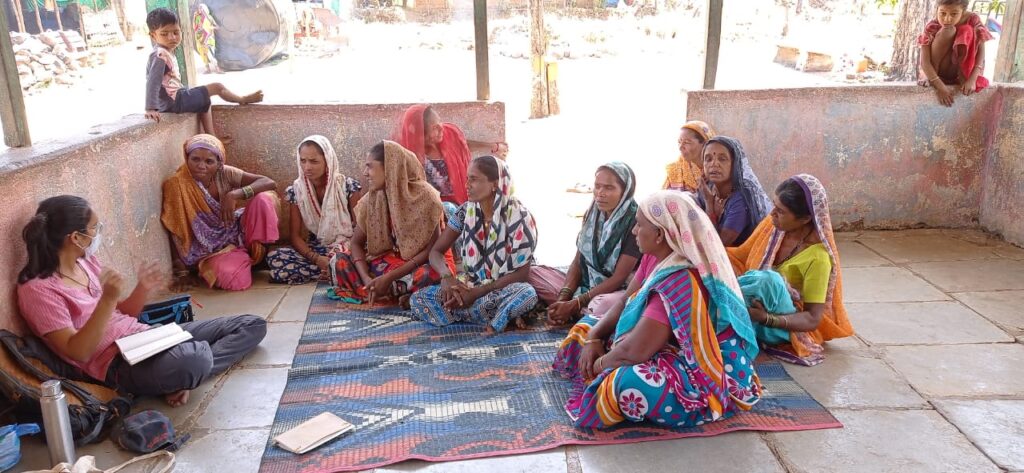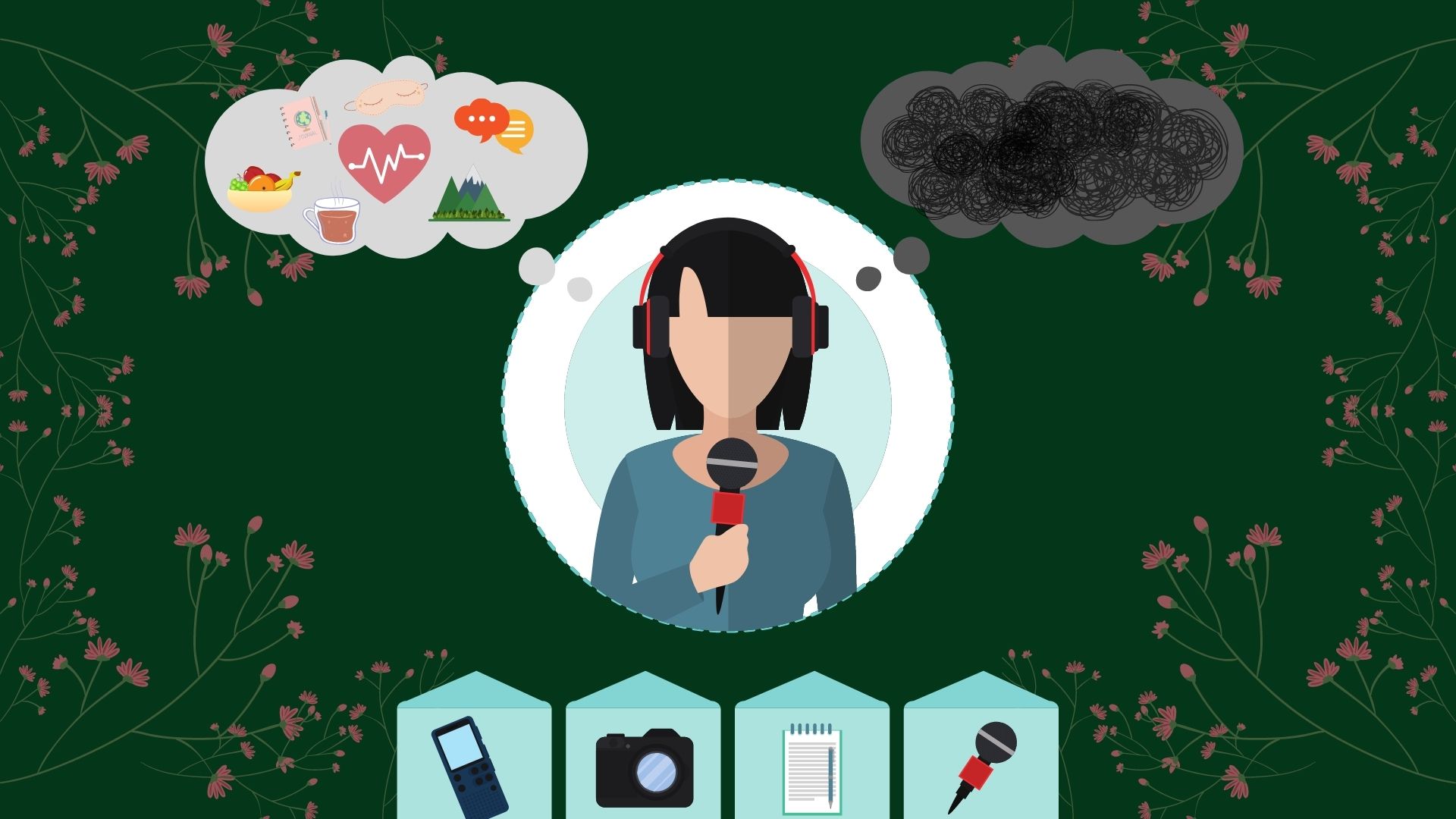I immediately sensed it—my question had caused discomfort. I was on a reporting assignment in Gujarat’s Santrampur district, speaking to a family that had been rehabilitated there over forty years ago, after a large dam and its waters swallowed their home. I was carefully nudging the five family members with my questions when 62-year-old Suma Bhai Talar took over the conversation, revealing the details of how they left their home, forests, and land behind. He spoke with pain of the initial chaotic months where they spent monsoons under a tarpaulin that doubled up as a house, before being duped into buying illegal land. “Hum par jo beeti hai, ben, wo sirf hum hi jaante hai [what we went through, sister, only we know],” he said, with slight frustration.
I felt guilty. Did my chase for a story come at the cost of Suma Bhai’s comfort? But if he did not tell his story, how would readers—including those who may be able to influence a policy decision—know the human costs of rehabilitation? As an environmental reporter, I had posed this question to myself more than once over the years. I did so when an old fruit seller from Delhi’s Khori Gaon explained in tears how authorities demolished his hand cart in front of him, and when a flood-impacted family in Himachal Pradesh requested me to call back for an interview once they finished piecing their damaged jhuggi back together. These were stories of loss and conflict that would feature in my reportage by day, and sometimes find ways into my dreams at night.
“These are hard stories to tell,” says Disha Shetty, an independent science writer. “We [journalists] are writing stories about distressed people and situations, death, and destruction, and yet most times, we receive a dismissive attitude [from supervisors and the industry] towards feeling emotions of despair [while doing this work]. We are asked to repress it, suck it up, and move on. Repressing these emotions is considered normal.”
Just as a changing climate influences the mental health of those directly witnessing it, those reporting on it also face similar effects. A 2019 US-based study found that after covering the devastating Hurricane Harvey of 2017, 93% of journalists interviewed experienced some symptoms of depression, while 90% witnessed some levels of Post-Traumatic Stress Disorder (PTSD). ‘Ecological Grief’ and ‘Eco Anxiety’ are other terms that have emerged in the context of the climate crisis, impacting not just those witnessing the changes first hand, but also those who are far away from the front lines, including journalists.

What is it about the nature of environmental journalism that triggers negative feelings? And, more importantly, what can media houses do to support a healthy work environment for their on-ground journalists?
The Baggage Of On-Ground Stories
Between 2018 and 2019, Shetty travelled to seven Indian states for a series documenting climate change, reporting on how communities dealt with Rajasthan’s drying lakes and Meghalaya’s uncertain rainfall patterns, amongst other topics. “When the series was coming to an end, I found myself asking existential questions about my own life decisions. Listening back to the interviews on my voice recorder while writing a story on how people’s lives were impacted by these changes also meant experiencing their trauma once more,” shares Shetty. “It took me a long time to understand that the slight alteration in my mood was a form of grief I was feeling after closely seeing that the climate was indeed changing. I realised this feeling had a name–’solastalgia’–after I read an article about other journalists experiencing the same [emotions].” Solastalgia has been described as a feeling of distress caused by environmental changes taking place close to home.
“It’s important to note that there are some journalists who are also personally impacted by stories they are covering,” says Amantha Perera, a Melbourne-based Sri Lankan journalist who is currently Regional Coordinator with the Dart Centre for Journalism and Trauma and a Researcher with Australia’s Central Queensland University. “For instance, if a reporter from the Asia-Pacific region is writing about rising sea levels, they would also be aware of the possibility of losing their own homes due to the changing climate. So, the details included in the story would also have a direct bearing on their lives as well, which means that there is an added layer of stress or trauma for the journalist.”

There are more ways in which the profession—and these emotions—seep into the journalist’s personal space long after the story is written and published. “It is difficult to simply cut off from people we interview. Distressed about their situation, people might continue calling after the story is completed asking if our story resulted in any response from the government or civil society. When that happens, I sometimes feel their distress impacting me as well, which heightens as I start observing the politics of how the system around us works inefficiently,” says an environmental researcher-journalist who requested anonymity, and has been in the profession for three years.

This is not to say that the nature of ground reporting on the environment alone is a trigger for an unhealthy mind. As Sushmita, an environmental researcher and reporter points out, it is also attached to organisational culture.
The In-House Organisational Triggers
“Going to the field and interacting with communities always has an effect of ‘belongingness’ on me. When I travelled to some villages in Jharkhand and interacted with the women there for the first time after months of the first lockdown [in March of 2020], I felt like I had returned home,” Sushmita says. “However, it is the bureaucratic processes in organisations that I find more mentally taxing. There is a lack of recognition [from the organisations] that sensitive issues need time to report on, to ensure the correct facts are used. Organisations are still in a position where the mental and emotional work that goes behind writing in-depth pieces isn’t valued and appreciated. Moreover, sometimes one has to fight for basic issues like a byline or a decent payment and follow up several times on these.” Such day-to-day occupational stress for journalists has been connected to burnout, depression, anxiety, PTSD, alcohol and substance use, and high job turnover rates. When Sushmita sensed she was nearing a burn-out after two years of intense reporting, she slowed down by becoming selective about the stories she was writing.
For independent and freelance journalists, such occupational stress and triggers are even more challenging. “There is a higher level of uncertainty [for payment and publishing] that freelancers deal with,” adds Shetty. “A lot of the time, wherever ground reporting is needed by a media organisation, it is passed on to freelancers, many of whom are from smaller cities, and work without press cards and a sense of security.”
“In this way, the risks that come with reporting are often outsourced to freelancers.”
— Disha Shetty, independent science writer
Such risks are especially accentuated when covering sand mining or timber logging, which have also led to attacks on and murders of environmental journalists.
That the work culture within the organisation affects mental health was also reiterated by Jayaraman. “A lot of journalists that come to me are impacted by the toxicity of their work environment. It takes time for them to realise that the nature of their work mostly requires them to cover what’s going wrong around them, which causes stress and anxiety,” she says. “Additionally, they also talk about the unrealistic work schedules, deadlines, and the fact that they forget their own selves after being consumed by a story.”
So, how are environmental journalists keeping themselves mentally healthy?
Talking Mental Health in Newsrooms
For most media organisations, mental health is not yet a concern embedded into work policy. “While I notice that the stigma around talking about mental health has reduced, formal mechanisms [within organisations] are still lacking,” Shetty says. An in-house counsellor that journalists could go to debrief after an intense ground reporting trip could be a good step forward; so would asking media houses to pay counselling bills. “But so far, only very few organisations, like IndiaSpend are doing this after their reporters spoke up for the need of it; most of it [mental health support] is informally provided.”
“The biggest challenge in speaking about mental health amongst journalists is accepting that our stories impact our minds because this goes against one of the key pillars of journalism–objectivity,” adds Perera. “We have to find balanced understandings of the connections between mental health and the lived experiences of journalists.” In this regard, Dart Centre for Journalism and Trauma has produced a range of resources, including ‘Self Care Amidst a Disaster’ and ‘Style-Guide for Trauma-Informed Journalism’. They also organise and conduct region- and issue-specific workshops that can help journalists become more aware of signals of psychological distress or anxiety, and create peer support networks too.
While there are a few examples and anecdotes of supportive editors for environmental reporters, these are few and far between. “As a community, I think we [journalists] are talking about mental health, but we are not yet doing it as an industry,” Perera adds.
Given the lack of formal mental health policies, most journalists find their own coping mechanisms. In 2015, Shetty began trekking, an activity that she realised helped her immensely in coping with the difficult stories on health and malnutrition that she was covering at that time. “Since then, I have been trekking a lot more, and actively spending time in green spaces. After every intense field report, I consciously give myself time and pace out my next assignment. I do understand that this flexibility and balance is easier to achieve as a freelancer than as a full-time reporter.”
Sushmita finds respite with meditation, painting, and dancing. “Downtime or time that looks ‘unproductive’ to the outer world is actually the time when the brain is recuperating. Only by forgetting about something for a certain period of time can I come back to it with new thoughts or a deepened understanding of the same issue. Such ways of dealing with mental health have to be an important main agenda [for the media industry] and not just a side note. This is especially so when there are added triggers [journalists face nowadays] like online trolling, sexual threats, stalking, physical threats, and fatigue.”
Perhaps more research on reporters and mental health in India could shed light on the situation. “In the journalism community, we find so many peers falling back on alcoholism and smoking. Maybe it’s time to ask ‘why’ and see if these habits are a coping mechanism, and then study how this compares with other professions,” Shetty suggests.
As in other spheres, mental health discussions in journalism, and specifically environmental journalism, are slowly chipping away the taboo and stigma surrounding it in India. But the media industry is still miles away from arranging formal mechanisms for their reporters, creating safe spaces to talk about mental health, and discouraging toxic work environments. While encouraging conversation about mental health in the newsroom is a welcome step, it cannot be the only one. “The process starts with trauma awareness, but it ends with being armed with tools, resources, and skills to be resilient in face of environmental and climate reporting. This is important to become better, more empathetic storytellers, and get better at our work,” Perera says.
Featured image designed by Manasi Nene.






